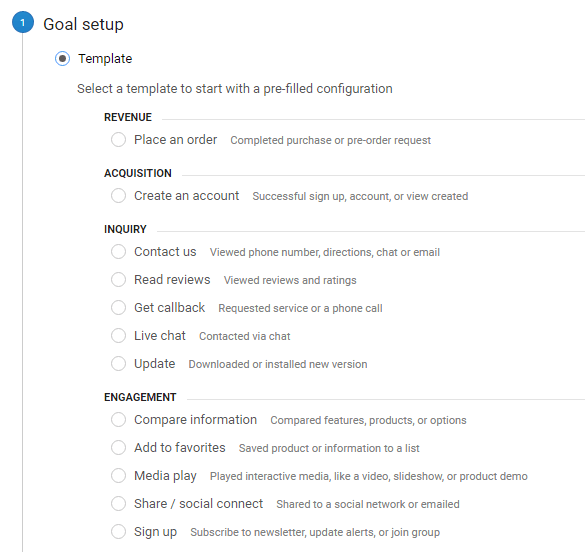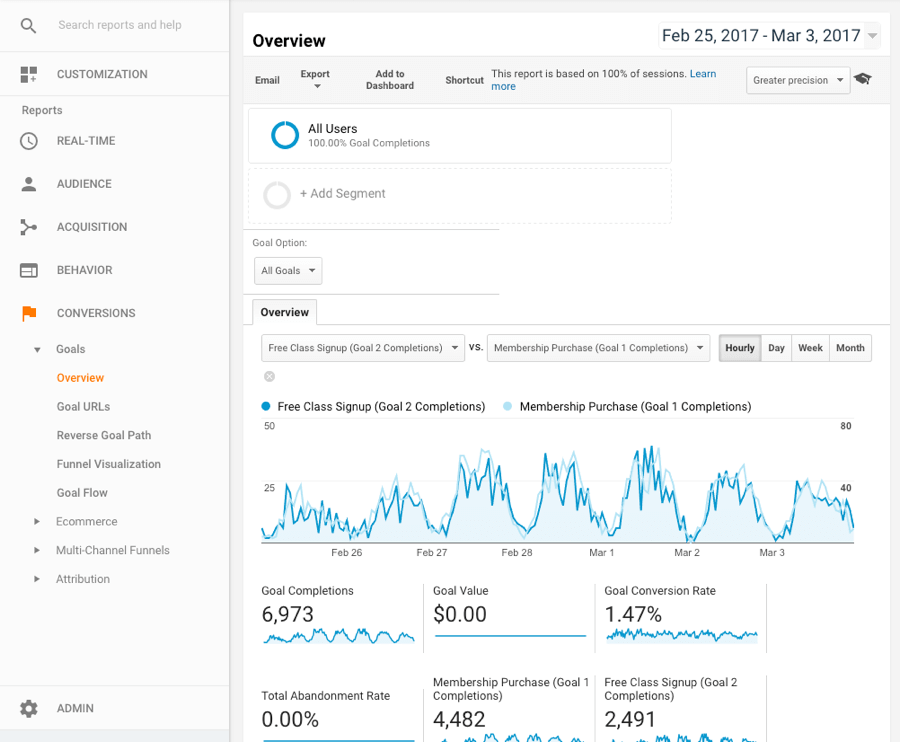Discover What Data Is Google Analytics Goals Unable to Track
Discover What Data Is Google Analytics Goals Unable to Track
Blog Article
Discover the Limitations of Google Analytics Goals: Revealing the Data Kind That Remain Untrackable
As organizations increasingly count on data-driven decision-making, recognizing the limitations of tools like Google Analytics becomes extremely important. While Google Analytics Goals deal valuable understandings into individual communications, there exist information kinds that elude tracking, presenting challenges to a detailed understanding of user behavior.
Insufficient Individual Trip Tracking
Insufficient individual trip monitoring within Google Analytics can prevent the capability to accurately examine individual habits. When the customer trip is not totally tracked, there are voids in the information that stop a comprehensive understanding of exactly how users engage with an internet site. This absence of understanding can bring about missed out on chances for optimization and enhancements to the user experience.
One common issue with insufficient individual journey tracking is the failure to see the full path that individuals take previously finishing an objective or leaving the site. Without this details, it is challenging to identify where individuals might be running into obstacles or friction factors that stop them from converting. Furthermore, incomplete monitoring can cover the effect of specific advertising and marketing efforts or internet site adjustments on individual actions.
To resolve this limitation, it is crucial to establish appropriate monitoring systems within Google Analytics to record the entire customer trip. This may involve establishing occasion tracking, goal funnels, or using tools like Google Tag Manager to ensure that no essential interactions go unrecorded. By getting a detailed sight of the customer trip, internet site owners can make even more informed decisions to improve user engagement and drive conversions.
Attribution Difficulties
Browsing via attribution obstacles in Google Analytics needs an extensive understanding of exactly how different touchpoints contribute to the overall conversion process. Attribution challenges arise from the complexity of modern consumer journeys, where individuals interact with multiple networks prior to transforming. Google Analytics supplies numerous attribution models like initial touch, last touch, and direct, each offering a various perspective on exactly how credit history is assigned to touchpoints along the conversion course. These designs might not constantly precisely show the real effect of each touchpoint on the conversion.
One usual acknowledgment difficulty is the problem in attributing conversions to the right source, particularly in cases where customers connect with several channels before transforming. This can lead to errors in establishing which advertising efforts are driving the most conversions. Additionally, cross-device monitoring postures another attribution obstacle, as customers frequently change between devices throughout their journey, making it challenging to track their interactions effortlessly. Marketing professionals should carefully assess and translate attribution data to make enlightened choices and maximize their advertising strategies properly.
Offline Conversions
Offered the challenges associated with associating conversions accurately in online channels, the measurement of offline conversions offers a substantial opportunity for marketing experts seeking an extra extensive understanding of their clients' trip. Offline conversions describe activities that customers take in the physical world, such as making acquisitions in brick-and-mortar stores or over the phone, attending events, or involving with published products - what data is google analytics goals unable to track. These conversions are vital for companies that operate both online and offline, as they provide beneficial understandings into the efficiency of advertising campaigns across various touchpoints
Tracking offline conversions typically positioned a significant difficulty for marketers, as it was challenging to attach these actions back to particular on the internet communications properly. With improvements in technology, such as the assimilation of CRM systems, distinct identifiers, and promo code codes, organizations can currently link the space between online and offline data to obtain a much more all natural view of client actions. By efficiently measuring offline conversions, marketing professionals can maximize their techniques, assign sources much more efficiently, and ultimately boost the total client experience.
Cross-Device Monitoring
Cross-device monitoring plays an essential role in understanding the interconnected nature of customers' digital interactions across several tools. In today's omnichannel world, where users seamlessly change between smartphones, tablet computers, and desktop computers, tracking their actions throughout these gadgets is essential for marketing experts to get a thorough sight of their client journey.

In addition, personal privacy problems and laws such as GDPR and CCPA have even more difficult cross-device monitoring. With individuals requiring even more control over their data and enhanced restrictions on tracking innovations, online marketers need to discover privacy-compliant and cutting-edge methods to link user communications across devices.
Dynamic Material Engagement
Comprehending individual involvement with vibrant content official site is critical in maximizing digital advertising and marketing approaches for improved audience communication. Dynamic material refers to website sites elements that transform based on user actions, preferences, or various other variables, offering a customized experience. Tracking customer communications with dynamic material positions obstacles for conventional analytics tools like Google Analytics.
While Google Analytics can track basic communications like clicks and page sights, it may battle to capture more nuanced interactions within dynamic material. what data is google analytics goals unable to track. Metrics such as time invested in certain dynamic components, float activities, or interactions within pop-ups are typically not quickly measurable making use of basic monitoring methods. This constraint hinders marketing experts' ability to totally realize exactly how customers are involving with vibrant web content and tailor their methods appropriately

Verdict
To conclude, Google Analytics goals have limitations in tracking incomplete customer trips, associating conversions properly, capturing offline conversions, tracking cross-device communications, and determining vibrant content interaction. These constraints highlight the relevance of discovering extra tracking approaches look what i found and tools to gain an extra detailed understanding of customer behavior and conversions beyond what Google Analytics can offer.
While Google Analytics Goals deal beneficial insights right into user interactions, there exist data kinds that elude monitoring, posturing challenges to a thorough understanding of customer habits.Incomplete customer trip monitoring within Google Analytics can prevent the ability to accurately examine customer habits. When the customer journey is not fully tracked, there are gaps in the data that stop a detailed understanding of how users communicate with a site.One common problem with incomplete individual journey monitoring is the lack of ability to see the complete course that customers take in the past completing a goal or leaving the website. By getting an extensive view of the customer journey, site owners can make more informed choices to enhance user involvement and drive conversions.
Report this page